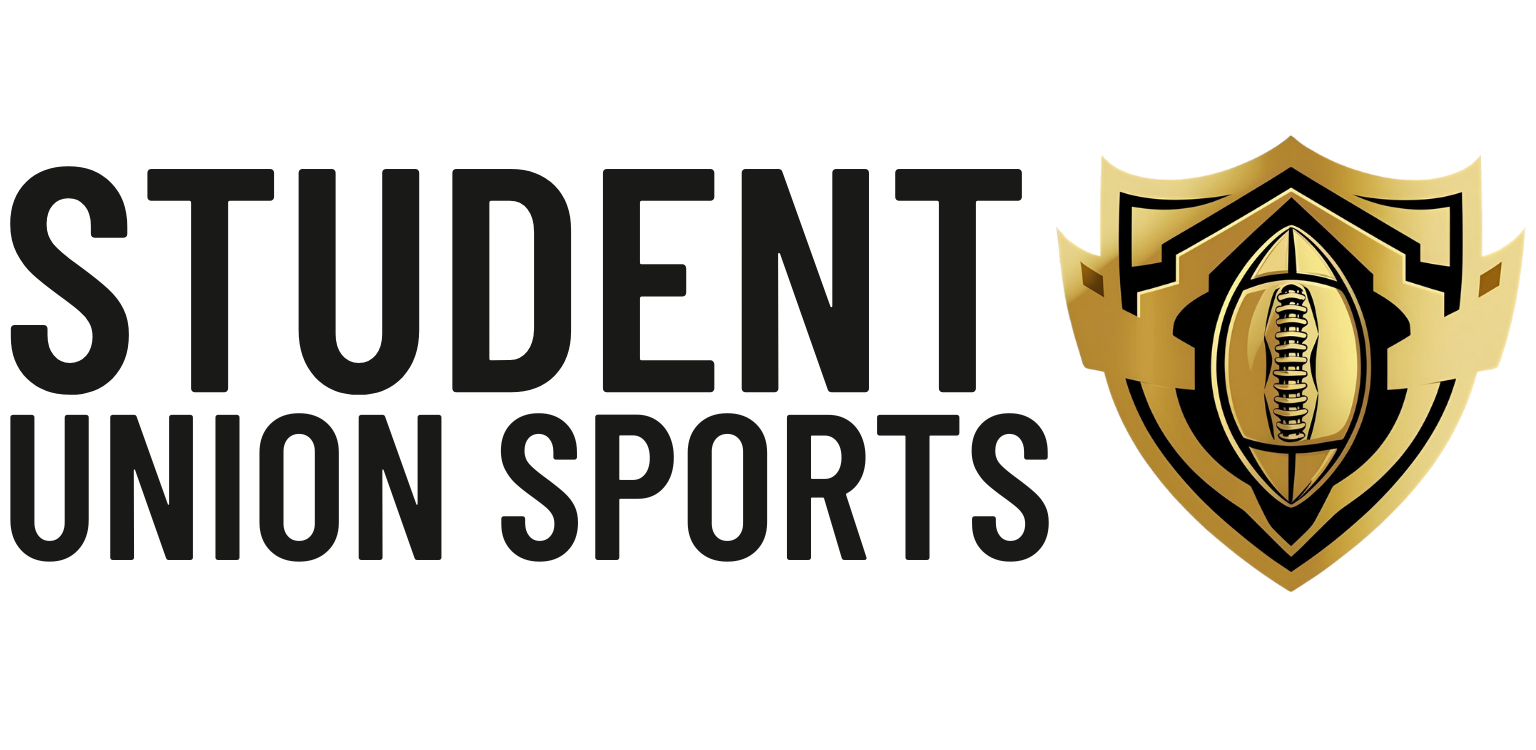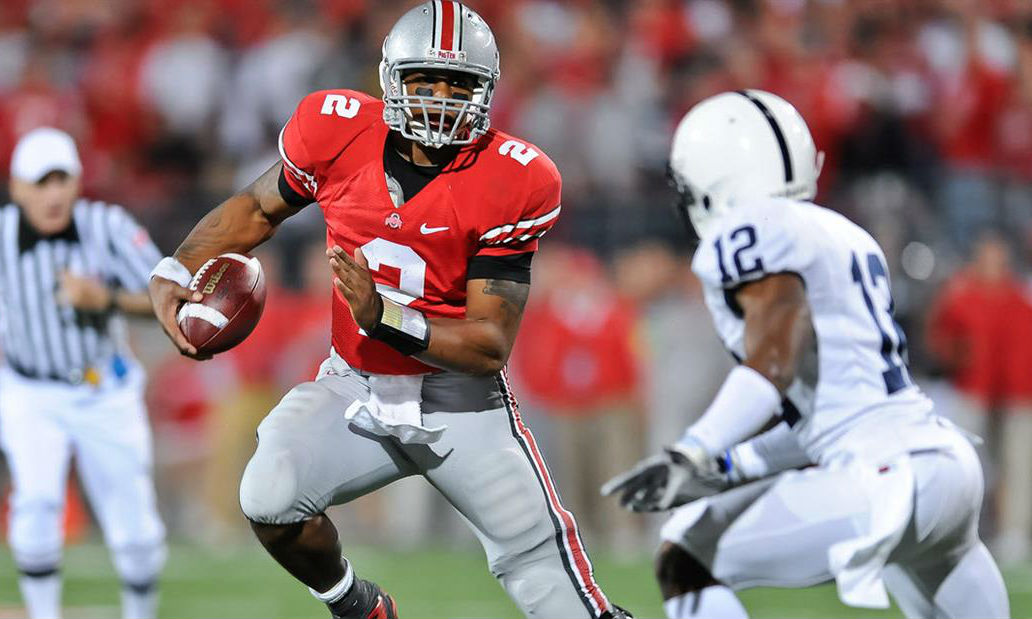The Heisman Trophy is probably the most prestigious individual award in American sports. Summer is the perfect time to get a Heisman campaign going. I’m already campaigning for Will Grier and JK Dobbins, in addition to Brian Lewerke and Justin Herbert. Bryce Love and Jonathan Taylor, Tailback also stick out.
Many a campaign has gained traction only to falter. In the past, injuries, team performance, and other factors, have claimed many a Heisman campaigns for players who were supposed to certainly win the Heisman. The Heisman cannot be won in June, nor can it be won in September.
Quarterbacks
Terrelle Pryor, Ohio State
TP2 could be the best pure athlete to ever play for Ohio State. As controversial as he was, Pryor led Ohio State to a Rose Bowl championship in 2010, as well as a Sugar Bowl championship the following season. These were two of head coach Jim Tressel’s most talented teams. Pryor was given a ton of hype in these two seasons, for good reason, but was never a Heisman finalist. 2011-12 was supposed to be his Heisman year, but the NCAA had different plants.
The 2011-12 team should have been a team of destiny. The hype around Pryor and the 2011-12 team would be derailed by a tattoo scandal that would see head coach Jim Tressel ousted. Pryor got drafted by the Oakland Raiders in the supplemental draft after deciding not to remain with the Buckeyes. Braxton Miller would then take over as QB1 for Ohio State, effectively ending the TP2 Era in Columbus.
[]
Christian Ponder, Florida State
Ponder and Florida State were ready to burst onto the scene in 2010. A loss to Oklahoma in their second game by a score of 47-17 at the hands of Landry Jones, DeMarco Murray, and the Sooners. Losses to NC State and North Carolina would effectively kill his campaign before the late-season loss to Virginia Tech that was the nail in the coffin.
Florida State came into that season with a ton of hype. They had a star quarterback and a defense that was supposed to be good. Ponder and FSU never got the wheels going after being ranked 2oth in the preseason of head coach Jimbo Fisher’s first season. However, once again, the Heisman campaign didn’t follow the script.
[
Running Backs
Mike Hart, Michigan
Mike Hart is famously known for his ‘little brother’ comments about Michigan State after the 2007 edition of the Battle for the Paul Bunyan Trophy. Mark Dantonio would take Hart’s comments and use it to fuel this rivalry for the entirety of his tenure.
2007 was supposed to be Michigan’s year. They brought back Mike Hart, Chad Henne and a nasty defense. There was just one thing that went wrong: Michigan forgot to bring that nasty defense. Long story short, Michigan lost two games at home to start a season for the first time in program history. However, they would demolish Notre Dame and Jeff Samardzija, Brady Quinn and company 38-0 in week three. That win would kickstart an eight-game win streak for the Wolverines before they fell to Wisconsin and Ohio State to end the season. They would go on to outlast Florida and actual Heisman Trophy winner Tim Tebow and the Florida Gators in the Capital One Bowl while newly-hired head coach Rich Rodriguez looked on.
Hart would finish his career at Michigan as the all-time leading rusher in Michigan history but losses to App State and Oregon doomed his campaign very early.
[]
Wide Receivers
Recency bias plays a factor here, but there has not been a wideout to garner enough serious attention for the Heisman that it would be considered an actual campaign. Do-it-all players who primarily play receiver get the most attention while anyone who is just a good receiver doesn’t have a realistic shot due to the nature of the position.
Sammy Watkins
Sammy Watkins stands as one of the most talented college football players of all time. He was a do-it-all player on offense for the Tigers, but ultimately didn’t see the touches needed to be seriously considered for the most prestigious individual award in college footbsll.
This absolutely is not to say that he had a campaign gone awry. Watkins is one of, if not the best, receiver of the last ten years in college football. Despite being as good as he was, receivers just don’t really win Heismans.
[]
Defensive Players
Jabrill Peppers
Peppers was an elite athlete for Michigan during his career there. However, it is not a hot take to say that as a football player he was decent at quite a few things but not exceptional at any one thing. His consideration for the Heisman was based on his versatility. That versatility Peppers possessed was nowhere near the realm of Charles Woodson, Michigan’s last Heisman winner.
Michigan fans loved to play him up. The simple truth is that he was never that good on the defensive side of the ball. Furthermore, he was hardly an impact player on offense. Take notice of who his biggest highlights were against.
[]
Injuries
Dennis Dixon, QB, Oregon, 2007
Youtube is a bit of a graveyard for old highlights. Dennis Dixon had Oregon rolling to PAC 10 and potentially BCS titles before a gruesome injury against Arizona ended those dreams. Prior to the injury, Oregon had only lost one game to a very good Cal team and had beaten top-10 teams USC and Arizona State. At this point the Ducks were thinking big, but after Dixon had his knee destroyed, the rest became history

Ranked second, Oregon ended up dropping games to Arizona, as well as UCLA and Oregon State to end the season.
In 2007 these numbers were unreal. Had he not gotten injured, Dixon could very well have lead Oregon to an 11-1 record, a PAC 10 title and a BCS title game berth with some absurd stats along the way.
[
Sam Bradford, QB, Oklahoma, 2009
Sam Bradford had already won the Heisman in 2008. He came back to what was considered a loaded Oklahoma team for the 2009 season. The NFL would agree as Sam Bradford was drafted first overall to go with teammates Gerald McCoy (3) Trent Willaims (4) and Jermaine Gresham (21). Three other Sooners would be taken in that draft. It looked as if Bradford could become the first back-to-back Heisman winner since Archie Griffin.
The season-opener against Brigham Young dashed all of Oklahoma’s aspirations. A few days before the opener, Jermaine Gresham suffered a knee injury that would sideline him for the entire season. Oklahoma suffered a humiliating defeat to BYU after being heavy favorites.
Sam Bradford would become the all-time leading passer in Oklahoma history before suffering a shoulder injury against BYU. This injury would cause him to miss three games. His next start would be against the Texas Longhorns. Bradford would be injured on a sack on the first play of the second offensive drive for the Sooners and his season would be over. Texas would go on to win the game and Oklahoma would stumble to a 7-5 record. They would beat Stanford in the Sun Bowl to finish 8-5. What could have been one of Oklahoma’s best seasons under Bob Stoops quickly turned into a ‘nightmare’ for Sooner fans.




